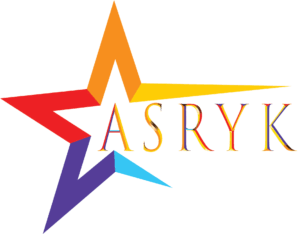Neuralink: Bridging the Brain-Computer Divide – A Technological Odyssey
Neuralink: Bridging the Brain-Computer Divide – A Technological Odyssey
Nestled within the burgeoning field of Brain-Computer Interfaces (BCIs) lies Neuralink, a company aiming to revolutionize our understanding and interaction with the human brain. Founded by Elon Musk in 2016, Neuralink has captured the public imagination with its ambitious visions of augmenting human capabilities and directly connecting the brain to the digital world. However, with such bold claims and complex technical hurdles, the path forward for Neuralink is paved with both immense potential and significant challenges. This article delves into the company’s ambitious goals, current advancements, potential benefits and risks, and the ethical considerations surrounding this groundbreaking technology.
The Dream: Decoding and Augmenting the Mind:
Neuralink envisions a future where humans can seamlessly interact with computers through a direct brain-computer interface. This interface would involve surgically implanting tiny, biocompatible threads equipped with electrodes into specific brain regions responsible for movement, vision, and other sensory functions. These electrodes would then pick up neural signals, decode their meaning, and transmit them to external devices, allowing for unprecedented control and interaction. The potential applications are vast, ranging from:
- Treating neurological disorders: Assisting paralyzed individuals in regaining control of their limbs, restoring vision in the blind, and alleviating symptoms of Parkinson’s disease and epilepsy.
- Enhancing human capabilities: Boosting memory, learning, and concentration, enabling direct communication with technology, and even potentially granting access to virtual and augmented realities.
- Creating a symbiotic relationship with AI: Merging human and machine intelligence, blurring the lines between biological and artificial systems, and potentially leading to a new era of cognitive evolution.
The Reality: Navigating Technical and Biological Complexities:
While the dream is captivating, the technical realization of Neuralink’s vision remains a significant challenge. The human brain is an intricate and delicate organ, and implanting foreign objects raises concerns about biocompatibility, safety, and potential long-term health risks. Additionally, the ability to accurately decode and interpret complex neural signals is still in its early stages, requiring further research and development.
Currently, Neuralink’s efforts focus on two key areas:
- Developing the Neuralink device: The company is working on miniaturized, flexible neural threads that can be safely implanted into the brain and efficiently transmit neural signals. Initial trials involving animals have shown promising results, but scaling this technology to human trials remains a significant hurdle.
- Understanding and decoding neural activity: Neuralink is actively involved in brain mapping research, aiming to create detailed maps of neural pathways and the specific patterns associated with different thoughts, actions, and sensations. This knowledge is crucial for accurately interpreting the signals captured by the implanted device.
The Ethical Crossroads: Balancing Potential and Risk:
The ethical implications of Neuralink’s technology are complex and require careful consideration. Concerns include:
- Safety and potential health risks: The long-term effects of implanting neural devices in the brain are unknown, and potential risks like tissue damage and immune reactions need to be thoroughly addressed before widespread adoption.
- Data privacy and security: Brain data is incredibly sensitive and personal. Ensuring the secure storage, transmission, and use of this data is paramount to protecting individual privacy and preventing potential misuse.
- Equity and accessibility: Will this technology be accessible to all, or will it exacerbate existing inequalities? Questions of affordability and equitable access to such transformative technology need to be addressed.
- Brain hacking and manipulation: The potential for malicious actors to access and manipulate brain activity raises concerns about misuse and the potential erosion of human autonomy.
The Road Ahead: A Collaborative Journey:
Neuralink’s journey is at its early stages, but its potential impact on the future of medicine, technology, and humanity is undeniable. While technical challenges and ethical considerations remain significant, open dialogue and collaboration between scientists, engineers, ethicists, and policymakers will be crucial to navigating this complex landscape.
Ultimately, the success of Neuralink hinges not just on technological advancements, but on a responsible and ethical approach that prioritizes human well-being, equity, and individual autonomy. By fostering open dialogue and embracing a collaborative approach, we can ensure that this groundbreaking technology serves humanity’s best interests and helps us unlock the vast potential of the human brain.
Neuralink’s Advantages: A Glimmer of Hope or a Pandora’s Box?
Neuralink, Elon Musk’s ambitious brain-computer interface project, promises to revolutionize our understanding of the brain and its interaction with the world around us. While concerns about safety and ethics abound, the potential advantages of this technology are undeniable, offering the possibility to improve lives in countless ways. Here, we explore some of the most significant potential benefits of Neuralink:
1. Restoring and Enhancing Human Abilities:
- Combating Neurological Disorders: Imagine a future where individuals with paralysis regain control of their limbs, or those suffering from Parkinson’s disease or epilepsy experience relief from debilitating symptoms. Neuralink aims to directly address these challenges by stimulating specific brain regions, offering hope for restoring lost motor and sensory functions.
- Augmenting Cognitive Capabilities: The potential to enhance memory, focus, and learning opens doors to a world of possibilities. Students could absorb information more readily, professionals could optimize their performance, and individuals with learning disabilities could receive targeted assistance.
- Treating Mental Health Conditions: Depression, anxiety, and other mental health conditions often stem from imbalances in brain activity. Neuralink’s ability to monitor and modulate these signals could lead to new, personalized treatment approaches for various mental health challenges.
2. Expanding the Boundaries of Human Interaction:
- Direct Brain-Computer Communication: Imagine controlling your devices with your thoughts, effortlessly interacting with virtual environments, or transmitting information directly between brains. Neuralink’s technology could bridge the gap between humans and computers, creating intuitive and seamless interaction possibilities.
- Enhanced Sensory Experiences: Imagine regaining sight for the visually impaired or experiencing augmented reality integrated directly with your senses. Neuralink could revolutionize sensory experiences, opening new avenues for communication and engagement with the world around us.
3. Unlocking the Potential of the Human Mind:
- Understanding the Brain: By directly monitoring and recording neural activity, Neuralink could provide unprecedented insights into the workings of the human mind. This could accelerate our understanding of consciousness, learning, and decision-making, leading to breakthroughs in various scientific fields.
- Human-Machine Collaboration: The potential for humans and machines to work together seamlessly, leveraging each other’s strengths, could lead to groundbreaking advancements in fields like artificial intelligence, robotics, and space exploration.

4. Fostering a More Connected and Inclusive World:
- Bridging the Communication Gap: Neuralink could enable communication between people with different languages or disabilities, promoting inclusivity and understanding. Imagine translating thoughts directly into spoken language or enabling individuals with speech impairments to communicate effortlessly.
- Accessibility and Equity: While concerns about accessibility exist, Neuralink’s potential to address neurological disorders and enhance cognitive capabilities could benefit individuals who currently face limitations. Ensuring equitable access to this technology would be crucial to avoid exacerbating existing inequalities.
Conclusion:
Neuralink’s journey is fraught with challenges, but its potential benefits are undeniably enticing. From restoring lost abilities to enhancing human-computer interaction and unlocking the secrets of the mind, the possibilities are vast. However, it is crucial to approach this technology with caution, prioritizing safety, ethics, and responsible development. Only through open dialogue and collaboration can we ensure that Neuralink’s potential empowers humanity and contributes to a brighter future for all.



